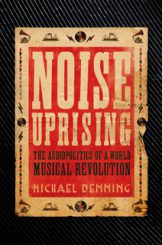The history of modern music was forever altered when in a few years after 1925 talent scouts and engineers were busy recording regional musicians and their styles, like hula, fado, beguine, calypso, marabi and many other musics. What decades later was repacked, remastered and resold as “folk,” and “roots” music, actually was local popular music; long before there was a globalized music market, and styles were easily and immediately mixed and remixed.
 This stage of early recording happened simultaneously to ethnographers aims to preserve pictures, sounds and languages of civilizations almost extinct, both in the US and abroad. They too, could do so with the invention of new means of conservation and documentation. Recent technology such as cameras, and most important, the phonograph made possible recordings in improvised studios and ballrooms. This unparalleled recording mania in remote parts of the world lasted until 1930, roughly, when the worldwide economic crisis stopped recording sessions and led to dramatic drops in phonograph sales.
This stage of early recording happened simultaneously to ethnographers aims to preserve pictures, sounds and languages of civilizations almost extinct, both in the US and abroad. They too, could do so with the invention of new means of conservation and documentation. Recent technology such as cameras, and most important, the phonograph made possible recordings in improvised studios and ballrooms. This unparalleled recording mania in remote parts of the world lasted until 1930, roughly, when the worldwide economic crisis stopped recording sessions and led to dramatic drops in phonograph sales.
The key recording locations turned out to be mostly port towns in colonized countries all over the world as Buenos Aires, Jakarta, Johannesburg, Havana, Rio de Janeiro, Cairo as well as American port towns as New Orleans and Honolulu. The music present there at the time of the recording always was the sound of the local working class. As in some of his earlier publications, author Michael Denning still argues rightfully, that music, sound and their unique location, both geographically and socially affect society and politics.
Hence, that music and sound “are fundamental to political analysis. … Thus the making of music – organized sound – is fundamental to the organization of social order, to create social space and social solidarity. Sound constitutes subjects as social subjects, creating and sustaining social groups.”
Furthermore, with shellacs of those recordings – that first were manufactured back in Europe and the USA, then shipped back to their recording locations – the function, market power, turnover and size of the music industry changed completely. Now there were new tasks such as distribution, ownership and copyright at hand: for the first time music companies sold mostly recorded music, and were not handling concerts and sheet music as their major source of income anymore. From then on money was made with recordings and the royalties of radio transmissions, re-recordings and licensing.
In Noise Uprising, we also learn about the many stages, those recordings and their respective music went through. Not only were they to overcome many prejudices such as being labeled “noise” and primitive sounds of amateur bands. In order to be recognized as music in the first place they had, for some time, to be categorized and marketed as folklore, but that process also was difficult. For just then in the early 1920s the many original folk melodies and songs were influenced and altered by popular music either by recordings some of the musicians heard or from radio broadcasts. Such modes of music consumption naturally left a mark on the individual styles of many musicians.
Michael Denning is a renowned William R. Kenan Jr., Professor of American Studies at Yale University and author of several books on popular culture, music and working class culture, always employing a leftist angle on things. (He may be best known for his excellent The Cultural Front, 1997). In the present book, he refers to the similarities of that music and recordings in great detail. Since all these sessions took place in archipelagos of colonial ports, all owe their existence to a transnational recording industry and an emerging phonograph culture, all were unique and previously unrecorded and all the styles started simultaneously with (sometimes very violent) anti-colonial movements in just those ports and colonies. And the tunes that were recorded between 1925 and 1930 almost all were “modernist products,” i.e. very recent emerging styles, sometimes just because of the phonograph and its power to connect countries and cultures.
The small musical revolutions in the port towns developed in the lowest quarters there, home to the poor and illiterate. The mere existence of the slums and the port town also always was powered by capitalism and colonial exploitation, says Denning. These particular towns were responsible for a great deal of what he calls “a revolutionary remaking of the world’s musical space.”
The port towns in their distance to the respective capitals, but with the energy and incredible high numbers of musicians working on street corners, in bars and restaurants, hotels and orchestras, had a huge influence on what was to become an atlas of sound. Denning researches some very interesting questions as to why this musical revolution happened in port towns, what was their economic, national, social and cultural potential, how did it change the music industry in the recording country and then worldwide and how did it even shape and alter whole nations in terms of their national character. In great detail and with an impressive sense for origins and outcome of local musical styles, this book is an eye-opener.
If you are ready to have your history of music, musical styles and recording technology mixed up entirely and get it updated with dates, musicians and cultural ties you did not even know existed, you could read and enjoy this study.
Review by Dr. A. Ebert © 2015
Michael Denning. Noise Uprising: The Audiopolitics of a World Musical Revolution. Verso, 2015, 320 p.
